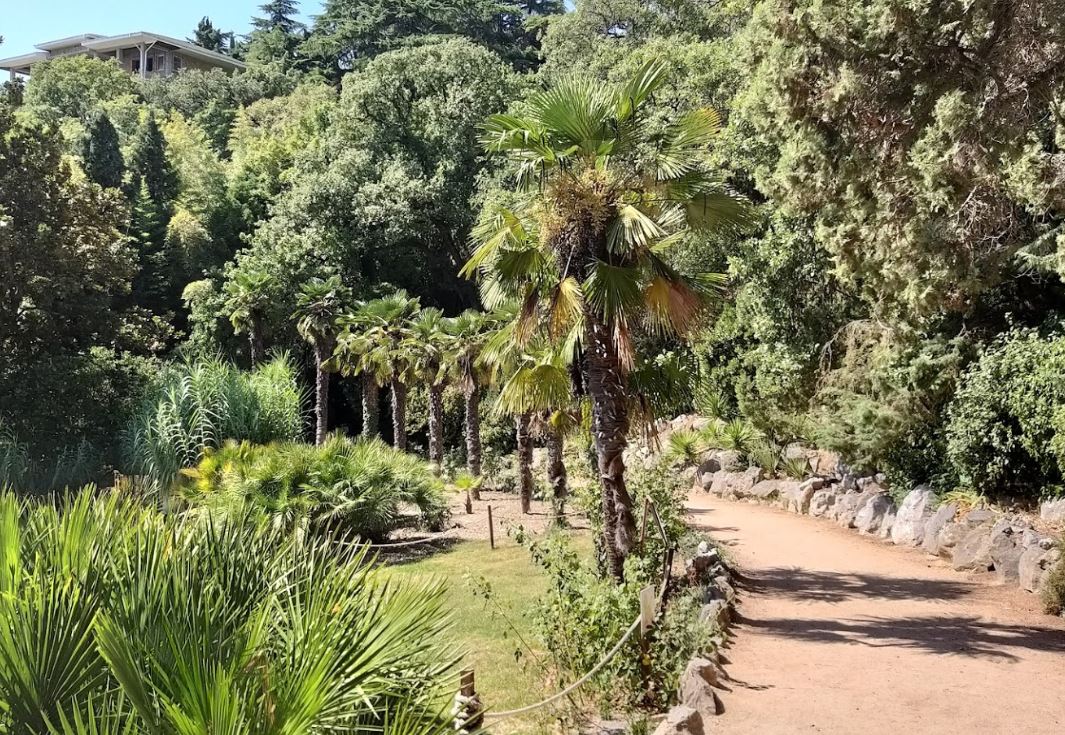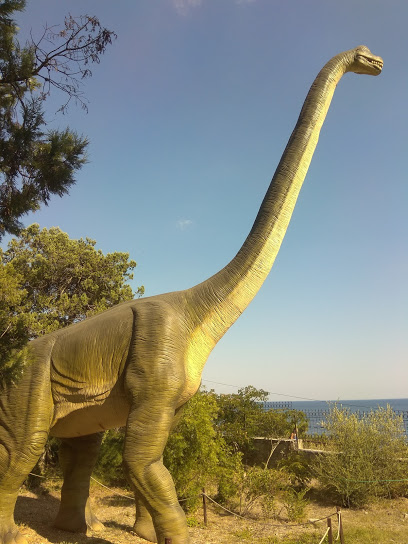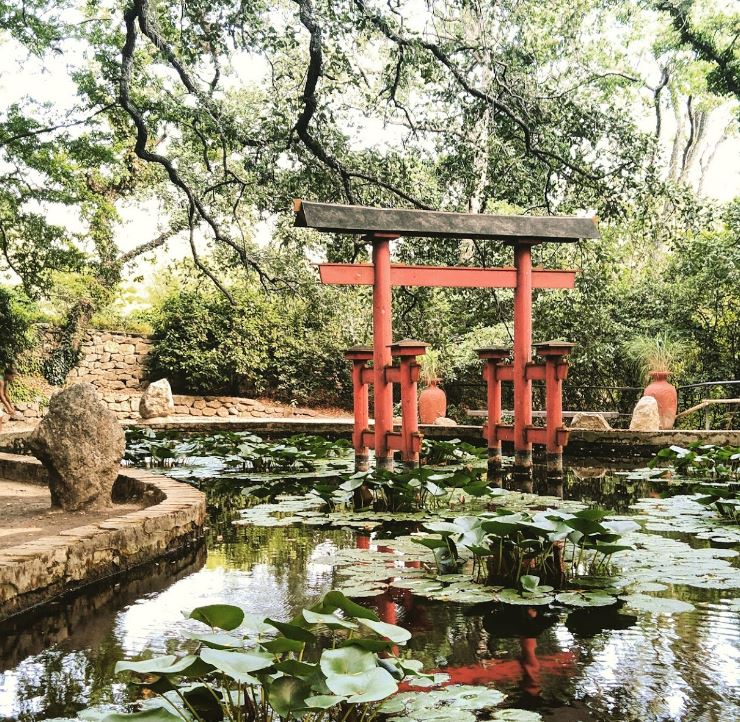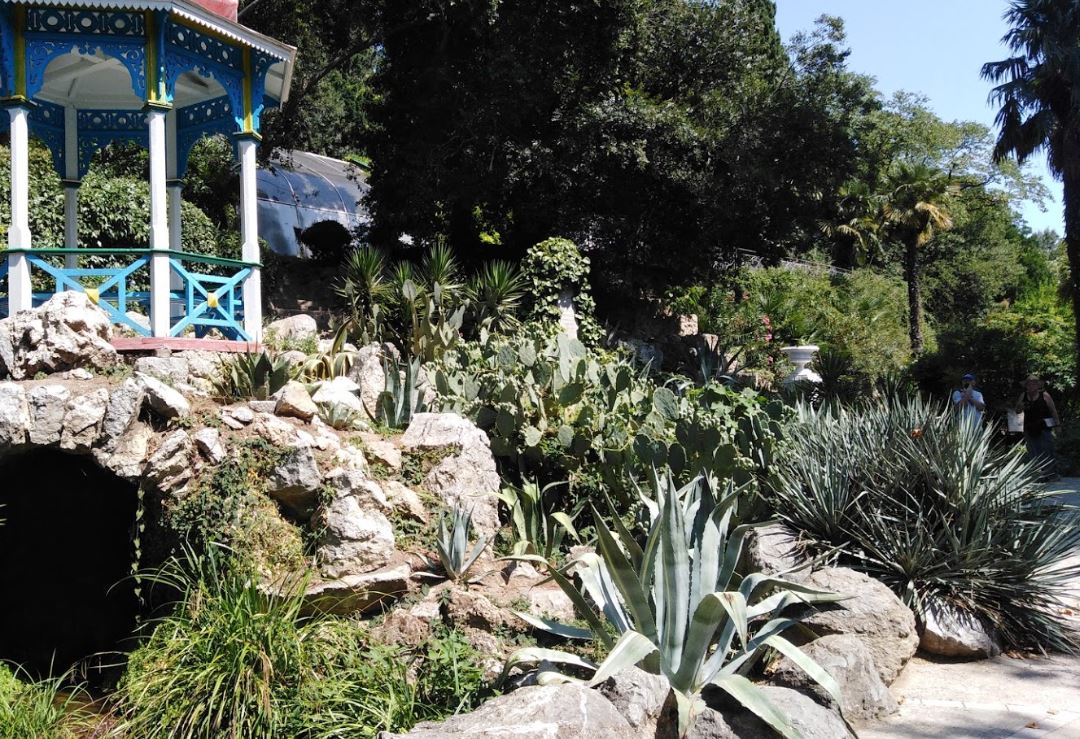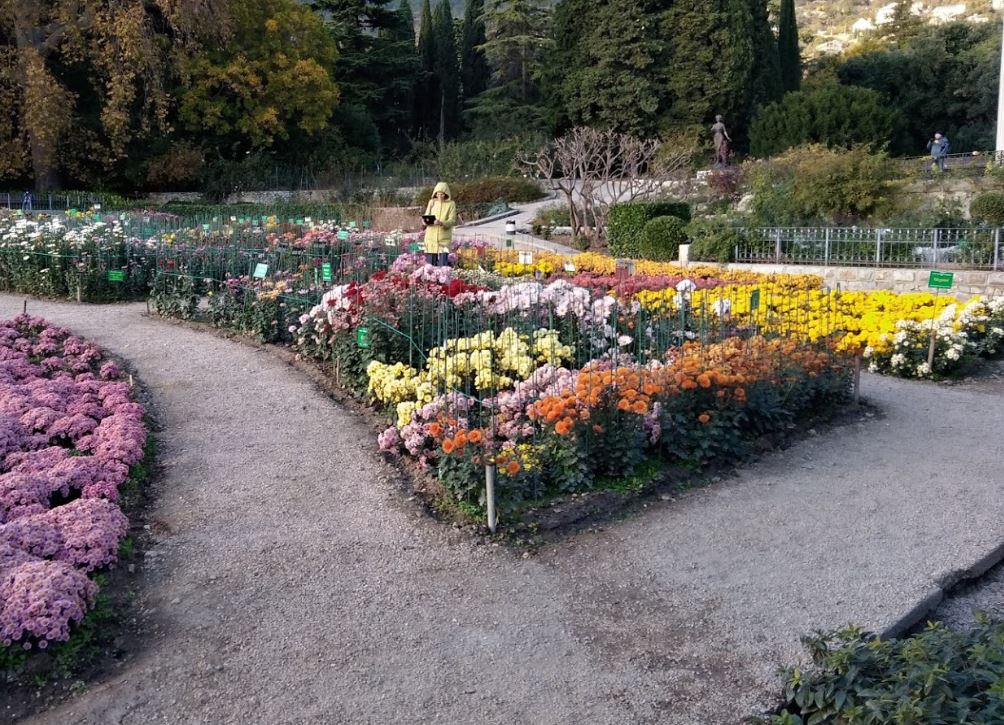A tour of the NBS-NSC Maritime Park starts near the scenic rocks, as if split into its base. In the Soviet era, this rock was called "The Rock of Rest". The pouring flow suggested him stop on a hot summer day. However, this other name rock is less welcoming. In the nineteenth century, it was known as Adger-Kai (translated from the Turkish "Dragon Rock"). Who knows whether the water from the mysterious cave where the ancient bengoline hides does not flow? Today, like dragon scales, the rock is covered with leaves of dark green Crimea sparkling from Crimea (Nedera helix var. Taurica L.) - evergreen Crimean trees. It is widely believed that ivy is a parasitic plant that absorbs juices from the trees it revolves on, but in reality the roots that formed on the buds of this vine are not lollipops but trailers. With their help Ivy only climbs the torso. At the same time, ivy grows with a large mass, grows in the crown of the tree, obscures the host tree, and can, like a real dragon, destroy it.
The story of the quirky ivy cliff of the Ajir Kaye is an example of how (European and Eastern) myths intertwine with the true botanical and historical facts of the Crimea. This overlap is one of excursions to the Nikitsky Botanical Gardens Marine Park, and the entrance is opposite Dragon Rock. In addition, at Seaside Park, learn about some elements of the art of landscaping eastern and European gardens, meeting the indigenous plants of Crimea, and watching rare and widespread wood introductions.
x
T
R
F
I
H
I
We have 16614 Parks Now ... The First and largest platform for green public parks
Приморский парк Никитского ботанического сада
Приморский парк Никитского ботанического сада
Yalta, Ukraine
Every Day : 09:00 am To 08:30 pm .
About Park
-
Preview
The tour starts at near the scenic rocksImportant Information
-
Every Day
09:00 am To 08:30 pm -
Foundation Date
1/1/1912
-
Every Day
-
Intertainment Elements
Sports
Sitting places
Entertainment
Trips
-
Main Elements
- Cleanliness
- Green areas
- Open spaces
- Open paths for walking
- Wildlife interest


